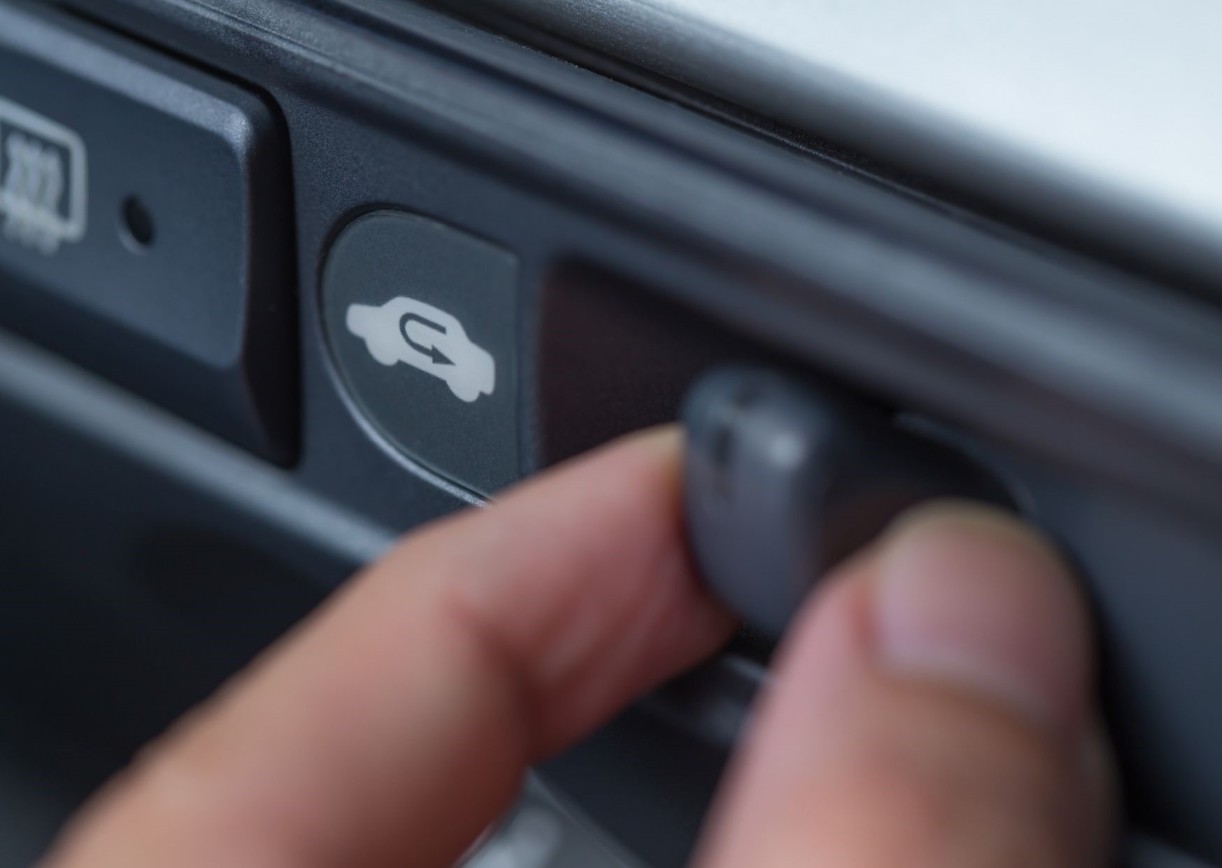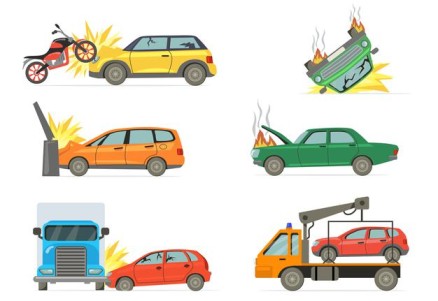General Insurance Blogs, Articles & Updates by - Magma Insurance
Have us call you
- RENEW YOUR POLICY
- BUY NEW POLICY

Best tips to understand heating and cooling problems in cars
How many of us can address the problems that arise unexpectedly in our car’s heating and cooling system? Not most of us are skilled to do that. We usually call the mechanic without even trying to figure out what exactly went wrong initially. In most cases, the underlying problems about the heating and cooling system are not difficult to detect and fix. Regular car maintenance and understanding these issues can prevent the potential repair cost and claiming of car insurance. So, let’s understand the DIY list and save big on these costs.
Heat is dispersed inside our car through the heat core. This device diverts hot radiator fluid, generating heat that hits the fan, which ultimately blows it out into the cabin. So, if there is an issue regarding the heating of your car’s cabin, then;
1. Check with the radiator hoses for any leaks
Leaking hoses can lead to overheating problems, especially if you haven’t changed them for a long time. If your car has aged, then it is advised to regularly check with the hoses and replace them if needed. Also, look out for the radiator fluid, whether the level is sufficient or not!
2. Heat core can be non-functional
In some cases, the fault is being detected in the heat core, which is the primary source of heat generation. No need to worry if your heat core is problematic. Visit a nearby automobile garage and get a new heat core installed.
3. Feel the fan for heat
You can manually touch the fan or blower to check if it throws warm air out of the duct. Sometimes due to overheating, the fans face physical damage. If this is the case, then get a new fan for your car.
4. Avoid clogging of the exhaust
If your car’s exhaust is jammed then it can lead to severe heating issues. Take care of the exhaust and always keep it clog-free.
If your car faces a cooling problem then;
1. Address the fluid leakage
The anti-freeze fluid can experience leakage due to faults in the valves responsible for the passage of this fluid. Leakages are easy to detect physically and can be fixed without any haste.
2. Refilling the coolant
The level of cooling is directly proportional to the level of coolant in the car’s system. Maintaining the appropriate level of coolant mixture is essential for the delivery of adequate cooling.
3. Something up with the thermostat
The thermostat is responsible for regulating the flow of coolant and temperature in the car’s engine. The opening and closing mechanism of the valves of the thermostat are crucial for unified heating and cooling effect. So, issues with the thermostat can lead to irregular cooling. Also, don’t leave the water pumps dirty. Wash out the residue clogging the passage of the coolant throughout the engine.
Your car gives you hints too. Just be alert and catch those hints at the right time to address the problems before they get worse. To give your vehicle a long life and improved performance, never neglect its heating and cooling issues. These small tips can reduce your maintenance cost and annual Car Insurance premiums in a big way.

Ways to buy Long Term Two Wheeler Insurance Cover Online
Insuring your motorbike the day you buy it, is often referred to as a thumb rule. However, the entire process of selecting and buying an insurance can be confusing, especially when you have to approach different agents & collect all those brochures.
Interestingly, the days for approaching an agent, getting multiple brochures, analyzing them, and buying the insurance are gone. Now, all you need to do is purchase your two-wheeler insurance online over several clicks. There are many companies that are providing you with instant insurance through online mechanisms. You can also choose to just call the customer care of the concerned company, give them the details through the mail, and you will have your insurance in no time.
What to buy?
There are mainly three types of two-wheeler insurance: comprehensive, third party, and standalone. These three types of insurance come in two varieties- short-term one-year policy and then the long-term policy that extends from 1 year to 3 years.
● Prevent Any Large & Long-Lasting Injuries: While the short-term insurances might seem tempting due to their lower premium amounts, long-term insurances provide you better benefits. Interestingly, buying long-term plans saves you ‘three’ renewal-free years, and that’s just one of the many benefits. Want to know more? Let’s get started!
Benefits of buying long term insurance:
1. No yearly renewal - When you buy long-term two-wheeler insurance, you don’t have to worry about renewing it every year. Sometimes you may miss the deadline for renewing the insurance; there may be extra charges for renewing the insurance after the deadline.
2. Penalties and charges - If you forget to renew your yearly insurance, you may face heavy fines and penalties if you ever get caught by the traffic police. Lapsed insurance attracts heavy fines due to non-compliance.
3. No claim bonus - You are entitled to receive bonuses if you haven’t claimed in a year. This is called the non-claim bonus. Long-term insurance is perceived to be expensive but the real fact is that it has got a lot of monetary benefits.
4. Attractive discounts - When you buy Two-Wheeler Insurance Online , you are ought to receive discounts in some or the other form.
Ways to buy a two-wheeler long term insurance:
1. Online - This is the best and the easiest way to procure two-wheeler insurance. When you buy two-wheeler insurance online, the main benefit that you get is that you eliminate the need for physical documentation. The Covid-19 era made it more crucial to procure insurance through online means because meeting with the agents physically doesn’t seem viable anymore. The insurance companies are resorting to mediums that will help the customer and the agent connect through the mode of chats, telephonic conversations, etc.
2. Agent - This is the oldest way of buying insurance that allows you to purchase insurance through an agent who handles all your formalities and claims documentation in this option. In this process, the agent charges you a commission for his work. It is a little less feasible option. This works as a suitable option for those who are not aware of online mechanisms and mediums’ mainly the old age group.
Conclusion
The benefits of buying two-wheeler insurance are immense. Starting from staying relieved from renewals for longer terms, to paying them at your convenience, going online is the best option. We are going through a pandemic that has taught us that it is crucial to adopt the online mechanism of anything available. Remember, besides striking great deals, the main reason to adopt an online mechanism is the safety parameter in terms of your as well as your family’s health.
Quick tips around buying a long-term insurance policy:
● Assess all your needs before selecting the insurer
● Read all the scheme related documents carefully
● Buy an insurance cover that you can afford
● Since you are buying online, ensure that you compare all the term benefits by different insurers

All About Two Wheeler Insurance Policy Coverage
Two-wheeler insurance or bike insurance is one of the essential tools that you need to invest in, for your vehicle. Interestingly, many people consider buying an insurance policy, even before receiving the delivery of their motorbike. One of the most highly purchased insurance schemes, two-wheeler insurance, is protecting your scooter, bikes, or mopeds.
It acts as financial protection for covering the damages or losses that may arise if your vehicle gets into an accident or gets damaged under multiple instances. Interestingly, this type of insurances also covers the vehicle’s repairs, third-party damages, etc., that may arise due to a Force Majeure event.
The recent motor vehicles act 2019, has made it mandatory to have at least third-party insurance for your bike.
Types of two-wheeler insurance:
1. Third-party insurance - As the name suggests, this type of insurance covers the compensation that may arise as a loss to you if you injure or kill someone due to an accident. This basic category of insurance covers all types of third-party liabilities. Although, third-party insurance doesn’t cover any expense for the damages of the insured’s vehicle. According to MVA, 2019, it is mandatory to have this category of bike insurance at least.
2. Standalone - The name makes it obvious; this category of Bike Insurance covers only the losses incurred to repair the insured’s bike. This category doesn’t cover the third-party liabilities that may arise as a form of injury or death. This is not a preferred category of two-wheeler insurance.
3. Comprehensive - Comprehensive bike insurance covers everything, the damages for the insured’s bike and the third-party liabilities. This is the most popular among all of them and the most preferred one. The best services, will always advise you to purchase this category of insurance.
There is a long-term bike insurance policy as well, which is generally known as multi-year two-wheeler insurance. This insurance, as the name suggests, carries on for few years. This insurance category’s advantages are no claim bonus, no policy lapse charges, and many more. You can get a year-long or multi-year insurance for all the above types of two-wheeler insurance.
Benefits of two-wheeler insurance:
1. Psychological - The major benefit of having two-wheeler insurance is that you are psychologically relieved from the tension and stress of any unforeseen circumstance regarding your bike. You stay assured that you don’t have to bear the losses alone; you have support from your insurance provider.
2. Legal compliance - The government has made it mandatory to have third-party liability insurance for any of your vehicles. Thus, when you own this category of insurance, you are complying with the government’s regulations.
3. Easy to buy and access - Everything related to two-wheeler insurance can be done online, which means that you can buy two wheeler insurance online in India as well as through the agent. You can also claim two wheeler insurance online in India.
4. Third-party liability - We have already mentioned this point several times. When you get into an accident, the biggest thing that will bother you is the third-party damages and losses. Two-wheeler insurance covers all that.
5. Protection against natural calamities - Natural disasters are uninvited! Your vehicle could get caught under several such instances (fire, landslide, flood, cyclone, earthquake, etc.). Having two-wheeler insurance saves your money against such calamities and covers your ride over such instances.
Final Words
What you need to understand is that this is not mere compliance with the authority. It is, in fact, a safeguard for your future. When you buy two-wheeler insurance from a good company, you ought to remain stress-free. And if you don’t, you might face multiple difficulties due to accidents. The biggest of them being the third-party liability, damage, and losses. Insurance can safeguard you from the pressure of the third party.
Tip: Before you decide to buy two-wheeler insurance, it is always advisable that you decide to have a pre-planned budget on your mind.

When should you not Claim Car Insurance?
The first task after buying a car is to get it insured. These insurance tools assist you in case of any damage or accident. Today, some of the best car insurance companies in India offers prompt service to clients in case of any mishaps. While the benefits of having insurance are known to most car owners, there is something more that you may need to know to make the best out of your insurance.
The best car insurance company in India would offer you the best insurance deals. But still, there can be limitations. You need to go through the terms and policies thoroughly before buying insurance. You will always find some restrictions no matter which insurance company you choose. The point is that you need to be careful about claiming the insurance. You need to know how to maximize the result despite the restrictions.
What are the situations when you need to rethink claiming insurance? Let us look into how you can utilize the facilities properly and make the insurance’s maximum use.
● When the car damage is minimal and it is a single-car accident - Car Insurances are generally claimed during severe damage or harm. When you are the only one involved in an accident, you may consider paying from your pocket in case of minor damage. You can save your premium insurance service and also avoid an insurance rate increase.
● When the amount is the same or less than the deductible amount - Even the best car insurance company in India provides a deductible amount. You need to calculate if the repair cost would be similar or less than the deductible amount. If this is the case, it is wise to avoid claiming insurance. You would need to pay after the amount exceeds. Thus it is better to save the insurance for the future and pay on your own if the damage is minimal. Don't claim insurance in such a situation as it would unnecessarily occupy your claim history and obstruct premium facilities.
● When you can settle with the other party - There can be situations when you get involved in an accident with another vehicle. Pay the repair cost if the damage is minimal. Try not to claim insurance in such a situation when settlement is possible.
● When your vehicle is old and you do not need a polished vehicle - You can simply ignore the minor scratches or any dents or dings if your vehicle is old. You can save money by avoiding the repair of insignificant and small damages and keep the insurance for further usage.
However, there are two situations when you must report the accident to your car insurance company in India:
• If the accident is major and caused significant damage to vehicles and individuals, you must report to the police station and inform the insurance company. Don't settle major cases between parties.
• Do report the case to the insurance company if any individual get an injury. This will secure financial aid for the treatment.
Conclusion
Save your car insurance for accidents that you may not handle by yourself. Act wisely and utilize the insurance opportunities properly. Lastly, make sure that you have all the required documents in place.

How to File a Claim Quickly In Case Of an Accident
Accidents can happen at any time and are often uninvited. Since such events can have a tremendous effect on your financial health, having personal accident insurance is your key to ensure financial assistance for your family and your treatment.
Applying for personal accident insurance in India is convenient and comfortable as the process can be completed online. But do you know the procedures to claim the insurance facilities after an accident? If not, then here are the instructions.
What are the Steps to Claim a Personal Accident Insurance?
Personal accident insurance in India, can be availed over multiple plans. But the standard features are to assist the treatment of the injured, provide financial aid to the family (depends on the seriousness of the accident), and take steps to repair the damaged vehicle. Now, let us see how you can access these facilities when you face an accident.
Here is a step-by-step instruction to claim Personal Accident Insurance In India:
● The first task is to report to the nearest police station about the accident and collect an FIR copy.
● The next step is to immediately call up the insurance policy provider and report the accident.
● You may also choose to report the insurance provider online by notifying them on their official website.
● One of the employees will then visit and check the condition of your vehicle.
● The insurance company will send the vehicle for repair.
● After the company approves your claim, it will pay all the bills, and you can simply relax.
● Personal accident insurance in India also identifies if any person gets injured. It pays for the treatment of the wounded person as long as he needs it.
But there are some conditions that you need to follow to get the facilities. Let us look at some of those.
List of information required to file your claim successfully:
● Insurance policy number
● Name of the person who owns the insurance policy
● Registered mobile phone number
● Accurate date and time of the accident
● Number of damaged vehicles
● Specifications of the vehicle
● A description of exactly how the accident happened
● Name of the driver
● The insured person's details should be provided if the injured person is not the same
You have to be careful about giving out the correct information. Otherwise, the company may decide to reject your claim.
List of documents you need to get the insurance facilities:
● Fill up the claim form and sign it properly
● A copy of the FIR filed at the local police station
● Registration certificate of the insurance
● A copy of the driving license
● An idea of the repair needed to the vehicle
● An estimate of the injuries and treatment required
There can be many other documents that you may need to submit. The procedures vary from company to company.
Tips to Avoid the Rejection of Your Claim
To avoid insurance rejection, you have to follow some common points. You should not risk it and make a strong case. Provide all the information to support the incident.
Here are some tips that can help you to avoid rejection of personal accident insurance in India:
● Provide some photographs and videos of the vehicle and the injured person as supporting evidence
● If there is any witness, provide his details to the insurance provider
● Don't miss out on informing the police, as providing a copy of the FIR is mandatory
● Don't be late. There is a time limit within which you need to report the accident. Report it as soon as possible
● Don't exaggerate the condition. Tell the truth to the insurance provider. If they find you deceptive, they will immediately reject your claim
● Don't decide anything before informing the insurance company. Let them examine and do the needful
Conclusion
Now that you understand all the essential steps required to file a claim, we hope that you get your accounts settled without much hindrance.
Lastly, here are a few takeaways to add value to your readers:
● Ensure that you click pictures of damages and injuries to submit as proof
● Note down the name and number of any witnesses present on the spot (if available)
● Don’t refrain from lodging an FIR
● Be honest about the entire incident, don’t try to lie or cook up the incident
● Ensure that you file the claim in the suggested time limit by your provider

Importance of personal accident insurance
Accidents are uninvited and can happen to anyone, anytime. There is always a chance of an accident when you are on the road. While you may hardly get an opportunity to stop the accident, you can surely secure your financial condition after the accident. This is when you need personal accident insurance.
Yes, we understand your confusion around the new term! Relax, we have you covered. Let’s begin by simplifying the term for you.
What is Personal Accident Insurance?
The consequence of an accident is uncertain and the financial strain that it puts on your savings can be undefined. Therefore, to ensure the financial security of your entire family over such incidents, opting for Personal Accident Insurance is mandatory.
There are two ways to get personal accident insurance online:
● Group Personal Accident Insurance – Here, the company head, along with the employees, buys insurance. You may get discounts as several people purchase together. It is an excellent option to secure all the employees’ financial support in case of an accident.
● Individual Personal Accident Insurance – You need to apply for it by yourself. You get financial assistance in case of demise, disability, or significant injury that happened due to an accident
Interestingly, the advent of digitalization now makes it easier for applicants to get personal accident insurance online. All you need to do is provide your details to protect your family from uncertain events.
Why is personal accident insurance important?
Accidents can happen anytime. Especially when India’s accident rate is alarming, it is always recommended to have personal accident insurance. It not only secures your treatment after an accident but also provides financial aid to your family. Thus the overall financial stress on the family will reduce if you have insurance.
It helps you to process the documents effortlessly and seamlessly send them to the insurance company. The company completely handles the later procedures. Further, this insurance will provide you financial help and minimize the stress on your income in case of an accident.
Let us look into the advantages of personal accident insurance that make it available and effortless for all:
● Financial Security – You remain tension-free when you have personal accident insurance. You secure your family and ensure your treatment when you have insurance.
● Easy Documentation – Most people think of insurance as a complicated procedure. However, nowadays, the process is simple and can be done in a minute. You need to provide the basic information, and the insurance company will do the rest.
● Online Service – In today's time, the most significant benefit is you can apply for personal accident insurance online Thus, you can quickly minimize paper works and apply it whenever you are free.
● Apply without Medical Test – You need no medical document to apply for personal accident insurance. This makes the procedure more straightforward and more effortless.
● Use Wherever You Need – Personal accident insurance policy allows you to get financial aid regardless of location. You can use the insurance whenever and wherever you come across an accident.
● Get Ambulance Assistance – Having personal accident insurance means you start getting help just after the moment of the accident. Most insurance companies provide ambulance expenses to take the injured to the hospital. Thus, you get complete assistance in case of an accident.
Final Words
There is no substitute for personal accident insurance, and it is incredibly beneficial to secure financial aid during any mishaps. However, while you are navigating through different websites, don't forget to check out the terms and conditions to choose the best insurance option.

5 Things to keep in mind While Renewing Your Health Insurance Policy
Health insurance policies provide financial coverage for most of the medical expenses that an insurance holder generates while the policy is in effect. One should always invest in health insurance to get subsidized medical care in times of need or health emergencies.
What to Expect From This Article
Everything you need to know about health insurance in India and policy renewal. Nowadays, renewal happens online. You can now buy a new policy and renew it through the company website. You can also use the internet to get price quotes from different companies and compare which policy offers the maximum value for money. You can compare the features, the sum assured and a host of other benefits provided to choose the policy that fits your criteria and budget the best.
Being Responsible
Most health-related expenses are unexpected, and therefore, it is crucial to have a financial cover during such adverse time. A health insurance policy is supposed to be renewed periodically for it to be functional. The renewal period is mostly a year.
Characteristics of a Good Health Insurance Policy
Adequate health insurance ideally covers all possible medical expenses. Health insurance comes in various versions. Depending upon what kind of policy you have, you can avail different types of medical costs ranging from surgeries to post-hospitalization care.
Interestingly, some companies also allow policyholders to add other options to customize the policy and make it even better suited to their needs.
Things to keep in mind while renewing your policy
Health insurance in India has an annual renewal period. Following are the five most important things to keep in mind while periodically renewing your health insurance policy:
1. Re-examining the health insurance requirements
2. Scrutinizing for any changes in the health insurance policy and its terms and conditions
3. Changing the insurance provider (if required) under the portability clause
4. Mentioning any new illnesses or allergies
5. Checking to see if a top-up plan is required
Let us now look at these requirements in detail:
- Re-examining the health insurance requirements
While renewing your health insurance policy, you must review the requirements to see if anything has changed. You should repeat the reviewing process for yourself and your family and make sure to stay on top of everything. This is necessary in the case of expanding families (childbirth) or the addition of a disease. This process also becomes necessary when you are changing jobs since a change in jobs entails a change in health insurance coverage.
- Scrutinizing for any changes in the health insurance policy and its terms and conditions:
Many changes could come about in the company policy and standard terms and conditions within a year. The policyholders are usually made aware of these changes through notices. It is necessary, therefore, to read all the notices before policy renewal.
- Changing the insurance provider (if required) under the portability clause:
If you feel dissatisfied with your current policy providers, you could always change your service provider under the Insurance Regulator and Development Authority (IRDA) provisions. This clause ensures a seamless shift to another insurance provider should you require it.
It is a useful clause since the process of changing occurs without losing any benefits. However, it is important to keep in mind that this change can only occur during the period of renewal. Further, it requires a 45-day notice to be reviewed by your existing insurance provider, to effectively make the changes.
- Mentioning any new illnesses or allergies:
Make sure you disclose all illness-related details at the time of renewal, to get appropriate medical claims.
- Checking to see if a top-up plan is required:
This move takes into account future health-based needs.
Conclusion
While your Health Insurance, policy has you covered over medical expenses, don’t forget to keep up with an active lifestyle. Remember, your insurance policy is just a tool to cover your costs in a critical situation but preventing such situation itself depends completely on how much you care about your health.

6 things that affect Your Car Insurance Premium
Accidents are uncertain and can come uninvited, leaving behind an inevitable financial loss. Thanks to tools like car insurance, it becomes easier for us to safeguard our vehicle from such unforeseen circumstances. Car insurance covers repairs, damages, third-party liabilities, and other kinds of coverages related to your vehicles.
While multiple car insurance companies in the market will promise you premium services, you need to understand the factors that weigh-in for an ideal product. Yes, numerous companies offer multiple benefits; but not all services might be useful for your car. Further, availing of such benefits could cost you extra premium. Therefore, you must understand the factors that need to be weighed before buying a private car insurance in India.
Following are some of those factors:
1. Type of cover:
There are mainly two types of car insurance namely comprehensive plans and third-party insurance. In comprehensive plans, both, the insured vehicles’ damages, repairs, or anything else that may arise due to any unforeseen circumstances and also the third party liabilities will be covered. In third-party insurance, only the third-party liabilities and damages will be covered. Thus, a comprehensive plan for private car insurance in India attracts more insurance premium as compared to third-party insurance.
2. Safety features present in your vehicle:
What the insurers look for is the safety mechanism installed in your car. Safety equipment like air-bag, GPS, alarms, central lock, etc. If you have installed a suitable safety mechanism, your premium rates will be less and vice versa. The rationale behind this is that the insurers believe the safer the car, the lesser the chances of mishap. A good safety toolkit installed will be greatly beneficial for you in terms of buying an insurance plan.
3. Geographical orientation:
The kind of terrain you reside in has a major impact on your premium. If you live in risky terrain where there are more chances of accidents, your premium will be high because of the attached risk and lower in case of lower risk.
4. Type of powertrain:
If your car has a diesel engine, then the premium will be high because of the higher prices of diesel vehicles. The factor of Insured Declared Value comes into play here. It means the pricing of your car in the market during the purchase of your car. You will notice that the premium segment cars have higher premiums than their less luxurious counterparts, which might be due to the same principle.
5. Deductibles and Limits:
Your policy’s limit is the maximum amount paid towards the covered loss against your premium amount. Typically, individual coverage has its own limit, allowing you to customize it according to your needs. Further, the more coverage you opt, the more premium you pay.
6. Your Profession:
Interestingly, your profession also has a part to play in your insurance premium. If you are involved in a profession that requires regular usage of your vehicle, chances are that you will have to pay a higher premium. The reason being that here the vehicle depreciates at a faster rate when compared to the other cars covered under a policy.
Final Words
It doesn’t matter whether you Buy Car Insurance Online or offline. What matters is that you look into these factors before purchasing it. Remember, the factors mentioned above are some primary reasons that affect your premium. There can be other numerous factors and not all of them can be estimated. Thus, it is always in your favor to buy insurance only after comparing the benefits from a host of insurers available in the market.

